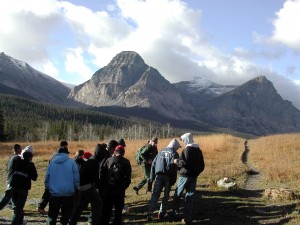Leaving ‘Leave No Trace’ Behind: Towards a Holistic Land Use Ethic

Originally appears in the Spring 2006 issue
If you asked an ecologist whether it is possible for humans to “leave no trace” on their environment, he or she would probably chuckle. Nothing lives on this planet without affecting its environment. From subsistence hunter-gatherers to modern western scientists, people have always encountered this truth. Yet in recent years, many outdoor educators, land managers, and recreationists have embraced a set of land use principles known as Leave No Trace. These principles emphasize ways for people visiting wilderness areas to minimize their impact on these areas. However, the central message of Leave No Trace — the notion that it is possible to live in the natural world without leaving a trace — is critically flawed. First, it conflicts with fundamental principles of ecology. Second, it encourages wilderness visitors to view the natural world as an environment in which humans do not belong, disconnecting them from the landscape. Third, the Leave No Trace principles do not address larger environmental issues and day-to-day patterns of behavior. By encouraging people to examine their actions only while they are in wild areas, the principles fail to help people understand the connection between their actions at home and the preservation of the wild places they seek to visit. These are fundamental shortcomings during a critical time in humanity’s evolving relationship with the natural world.
The attitudes and principles of behavior that students learn during camping and traveling in wild areas should be applicable to their everyday lives as well. They should increase students’ awareness that they are part of the natural world. They should help them to make educated, responsible decisions, and encourage them to take actions that have a positive impact on both wild and developed environments. In the following, we review the origin of the Leave No Trace movement, provide a critique of its overarching principles, and propose a new set of land-use guidelines that are based on the concept of “Conscious Impact Living.” These guidelines build on many of the Leave No Trace principles, but go further in helping students to connect with the natural world and to see their actions within a larger ecological context.
This content is restricted to subscribers only.
If you are not yet a subscriber, please consider taking out a subscription here.
If you are an existing subscriber, kindly log in or contact us at info@greenteacher.com for more information.





